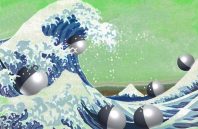Amoeba are unusual creatures that form when a dispersed population of cells spontaneously comes together and reorganizes itself into a multicellular macroscopic organism. To do this, a few leader cells emit chemical pulses that cause the other individual cells to move in the direction opposite to that of the traveling pulses, leading to the formation of dense clusters.
The observation that the amoeba cells move counter to the traveling wave, which is called the “diffusing wave paradox,” has puzzled researchers for a long time. This is because this movement differs from the amoeba’s usual behavior when searching for food in a maze-like environment. In these scenarios, the chemical signals are static instead of pulsed, and the amoeba cells move toward the higher chemical concentrations.

 (585) 768-2513
(585) 768-2513

